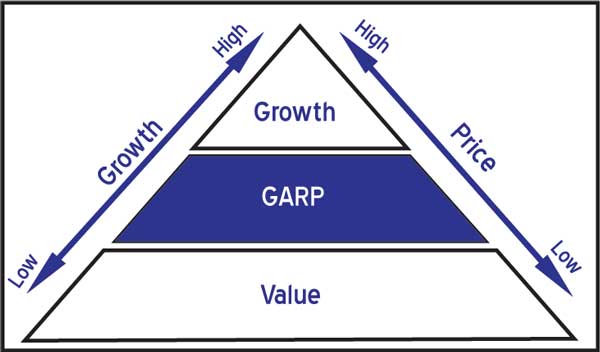06 Jun 2016 - {{hitsCtrl.values.hits}}
When it comes to personal finance and the accumulation of wealth, few subjects are more talked about than stocks. It’s easy to understand why: playing the stock market is exciting. But on this financial roller-coaster ride, we all want to experience the ups without the downs. In this article, we examine some of the most popular strategies for finding good stocks (or at least avoiding bad ones). In other words, we’ll explore the art of stock-picking - selecting stocks based on a certain set of criteria.
There is no foolproof system for picking stocks
Before exploring the vast world of stock-picking methodologies, we should address a few misconceptions. Many who are new to the stock-picking scene believe that there is some infallible strategy that, once followed, will guarantee success. There is no foolproof system for picking stocks! If you are reading this article in search of a magic key to unlock instant wealth, we’re sorry, but we know of no such key. This doesn’t mean you can’t expand your wealth through the stock market. It’s just better to think of stock-picking as an art rather than a science.

The bottom line is that there is no one way to pick stocks. Better to think of every stock strategy as nothing more than an application of a theory. Sometimes two seemingly opposed theories can be successful at the same time. Perhaps just as important as considering theory, is determining how well an investment strategy fits your personal outlook, time frame, risk tolerance and the amount of time you want to devote to investing and picking stocks.
At this point, you may be asking yourself why stock-picking is so important. Why worry so much about it? Why spend hours doing it? The answer is simple: wealth. If you become a good stock-picker, you can increase your personal wealth exponentially.
There are various types of stock
picking strategies used by the global investor community.
However, the article will delve into three of the aforesaid strategies as we have extensively discussed other strategies previously. Today’s article will focus on qualitative investing, GARP investing and CAN SLIM.
Although there are many differences between each strategy, they all come down to finding the worth of a company. Keep this in mind as we move forward.
Qualitative analysis
Valuing a company involves not only crunching numbers and predicting cash flows but also looking at the general, more subjective qualities of a company. Here we will look at how the analysis of qualitative factors is used for picking a stock.

Management
The backbone of any successful company is strong management. The people at the top ultimately make the strategic decisions and therefore serve as a crucial factor determining the fate of the company. We experienced how certain listed entities in Sri Lanka experienced financial constraints and induced market turmoil in the recent past due to mismanagement. It did not only disappoint its shareholders but also tampered market integrity. Thus, in Sri Lanka it is of utmost importance to infer into the strength of the management. To assess the strength of management, investors can simply ask the standard five Ws: who, where, what, when and why?
Who?
Do some research and find out who is running the company. Among other things, you should know who its CEO, CFO, COO and CIO are. Then you can move onto the next question.
Where?
You need to find out where these people come from, specifically, their educational and employment backgrounds. Ask yourself if these backgrounds make the people suitable for directing the company in its industry.
A management team consisting of people who come from completely unrelated industries should raise questions. If the CEO of a newly-formed mining company previously worked in the industry, ask yourself whether he or she has the necessary qualities to lead a mining company to success.
What and when?
What is the management philosophy? In other words, in what style do these people intend to manage the company? You can discern the style of management by looking at its past actions or by reading the annual report’s management, discussion and analysis (MD&A) section. Ask yourself if you agree with this philosophy and if it works for the company, given its size and the nature of its business.
Once you know the style of the managers, find out when this team took over
the company.
Why?
A final factor to investigate is why these people have become managers. Look at the manager’s employment history and try to see if these reasons are clear. Does this person have the qualities you believe are needed to make someone a good manager for this company? Has s/he been hired because of past successes and achievements, or has s/he acquired the position through questionable means, such as self-appointment after inheriting the company.
Know what a company does and how it makes money
A second important factor to consider when analyzing a company’s qualitative factors is its product(s) or service(s). How does this company make money?
Knowing how a company’s activities will be profitable is fundamental to determining the worth of an investment. Often, people will boast about how profitable they think their new stock will be but when you ask them what the company does, it seems their vision for the future is a little blurry: If you aren’t sure
how your company will make money, you can’t really be sure that its stock will bring you a return.
Industry/competition
Aside from having a general understanding of what a company does, you should analyze the characteristics of its industry, such as its growth potential. A mediocre company in a great industry can provide a solid return, while a mediocre company in a poor industry will likely take a bite out of your portfolio. Barriers against entry into a market can also give a company a significant qualitative advantage.
Brand name
A valuable brand reflects years of product development and marketing. Having a portfolio of brands diversifies risk because the good performance of one brand can compensate for the underperformers.
Keep in mind that some stock-pickers steer clear of any company that is branded around one individual.
They do so because, if a company
is tied too closely to one person, any bad news regarding that person may hinder the company’s share performance even
if the news has nothing to do with
company operations.
Assessing a company from a qualitative standpoint and determining whether you should invest in it are as important as looking at sales and earnings. This strategy may
be one of the simplest, but it is also one of
the most effective ways to evaluate a
potential investment.
GARP investing
Do you feel that you now have a firm grasp of the principles of both value (value investors actively seek stocks of companies that they believe the market has undervalued) and growth (it is a strategy focused on capital appreciation) investing? If you’re comfortable with these two stock-picking methodologies, then you’re ready to learn about a newer, hybrid system of stock selection. Here we take a look at growth at a reasonable price, or GARP.
What is GARP?
The GARP strategy is a combination of both value and growth investing: it looks for companies that are somewhat undervalued and have solid sustainable growth potential. The criteria which GARPers look for in a company fall right in between those sought by the value and growth investors. The GARP-preferred levels of price and growth compared to the levels sought by value and growth investors is illustrated in Chart 1.
What GARP is not
Because GARP borrows principles from both value and growth investing, some misconceptions about the style persist. Critics of GARP claim it is a wishy-washy, fence-sitting method that fails to establish meaningful standards for distinguishing good stock picks. However, GARP doesn’t deem just any stock a worthy investment. Like most respectable methodologies, it aims
to identify companies that display very specific characteristics.
Another misconception is that GARP investors simply hold a portfolio with equal amounts of both value and growth stocks. Again, this is not the case: because each of their stock picks must meet a set of strict criteria, GARPers identify stocks on an individual basis, selecting stocks that have neither purely value nor purely growth characteristics, but a combination of the two.
(Source: Investopedia)
(To be continued next week)
26 Nov 2024 57 minute ago
26 Nov 2024 1 hours ago
26 Nov 2024 1 hours ago
25 Nov 2024 25 Nov 2024
25 Nov 2024 25 Nov 2024